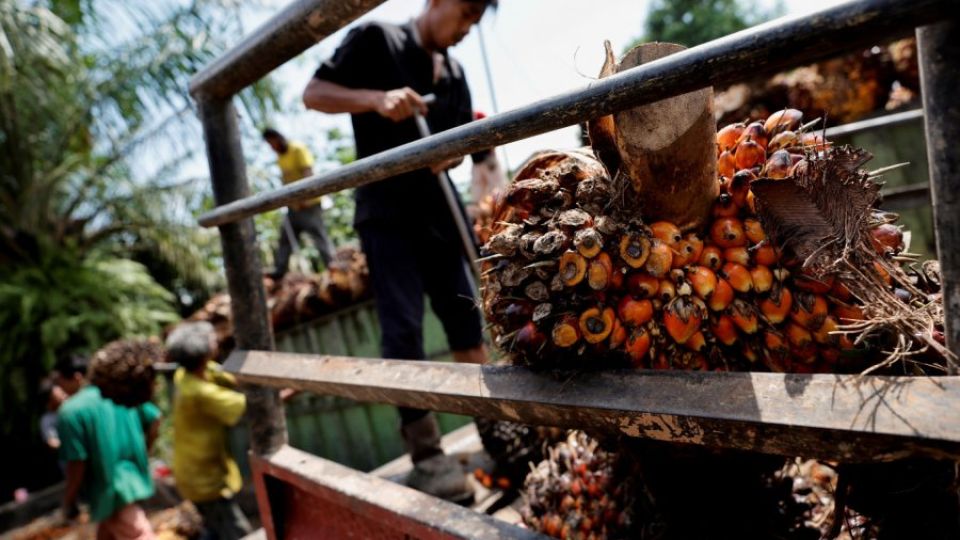February 14, 2023
JAKARTA – A recent government decision to tighten palm oil shipments by suspending some export permits will have a negligible impact on global prices, according to an analyst.
Malaysia’s benchmark crude palm oil price for April delivery on the Bursa Malaysia Derivatives Exchange rose 59 ringgit, or 1.5 percent, to 3,998 ringgit (US$930.42) a tonne, its third consecutive daily climb, three days after the Indonesian government announced the new rule, which briefly sparked concerns of tightening supply from the world’s largest palm oil producer.
But the increase in price did not last long, with prices falling 0.6 percent on Friday.
“It can be seen that all changes occurring in the domestic CPO market will have, to some extent, an impact on the global CPO market,” Girta Yoga, a senior research and development officer at the Indonesia Commodity and Derivatives Exchange (ICDX), told The Jakarta Post on Friday.
The CPO price had the potential to meet a resistance level in the range of 4,200 ringgit to 4,400 ringgit a tonne, Girta said. He predicted the range to move downside and reach a support level of 3,700 ringgit to 3,500 ringgit a tonne if faced with a negative catalyst.
The government has tightened export rules for CPO and CPO derivative products by temporarily disallowing exporters to exercise some of the export rights they obtained for selling a portion of their products to the domestic market under a policy known as the domestic market obligation (DMO).
The move is meant to ensure sufficient and affordable domestic cooking oil supply ahead of Ramadan and Idul Fitri.
Palm oil exporters had accumulated large shipment quotas last year and they now had little incentive to supply the domestic market, Coordinating Maritime Affairs and Investment Minister Luhut Pandjaitan said.
The DMO currently allows export volumes that are six times what companies have sold at home.
“Exporters can use those export rights after the situation has calmed,” said Luhut.
Kasan Muhri, head of the Trade Ministry’s trade policy agency, told the Post last Tuesday that some 66 percent of exporters’ shipment rights would be ineligible for conversion into export permits until May 1.
He added exporters were holding around 5.9 million tonnes worth of exporting rights earned through their compliance with DMO distribution from last June to January.
“Out of the 5.9 million, about a third of the existing quotas can be used now,” Kasan said in a text message.
Exporters could increase their quotas by raising supplies to the domestic market, he added.
Retailers have complained that cooking oil packages at lower prices have been hard to procure and they have been forced to sell them above the regulated price of Rp 14,000 (93 US cents) per liter.
The Trade Ministry last month said palm oil companies had been ordered to increase domestic supply to 450,000 tonnes per month until April, up from roughly 300,000 tonnes per month previously.
Food prices typically rise ahead of the Islamic month of Ramadan and the Idul Fitri celebration, which falls in April this year.
Indonesia previously enacted another policy aimed at tightening palm oil exports by allowing fewer shipments overseas for every tonne sold domestically.
Exporters are allowed to ship six times their domestic sales volume, less than the previous eight times. The move caused the Malaysian palm oil futures to jump on Dec. 30, 2022 and hit their highest since Dec. 1 at 4,193 ringgit a tonne.
Indonesian Palm Oil Association (GAPKI) Secretary-General Eddy Martono said while businesses would comply with the regulation, the new rule should be evaluated regularly, because Indonesia still needed foreign exchange from palm oil exports.
“The problem stems from the Minyakita shortage; there aren’t any problems concerning other types of cooking oil,” he said in a text message on Friday, referring to the government-sponsored, simple-packaged cooking oil, the retail price of which is capped at Rp 14,000 a liter.
However, its retail price has gone to as high as Rp 20,000 a liter and in some places, Minyakita has disappeared from shelves. The government has attributed Minyakita’s price rise and scarcity to its popularity among consumers, who see it as good value for money when compared with premium cooking oil brands.
Minyakita is actually intended for people living on low or lower middle-class incomes.


